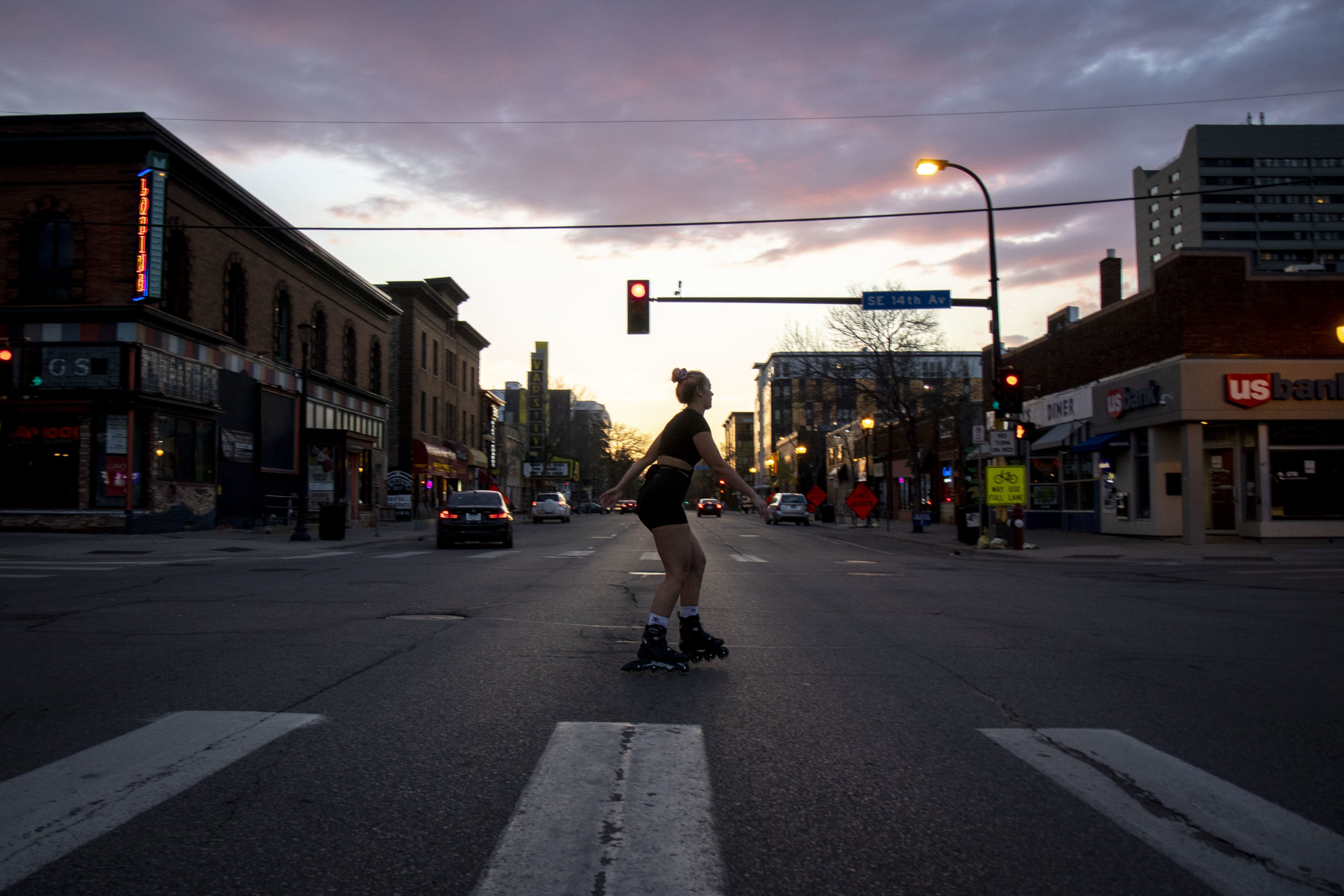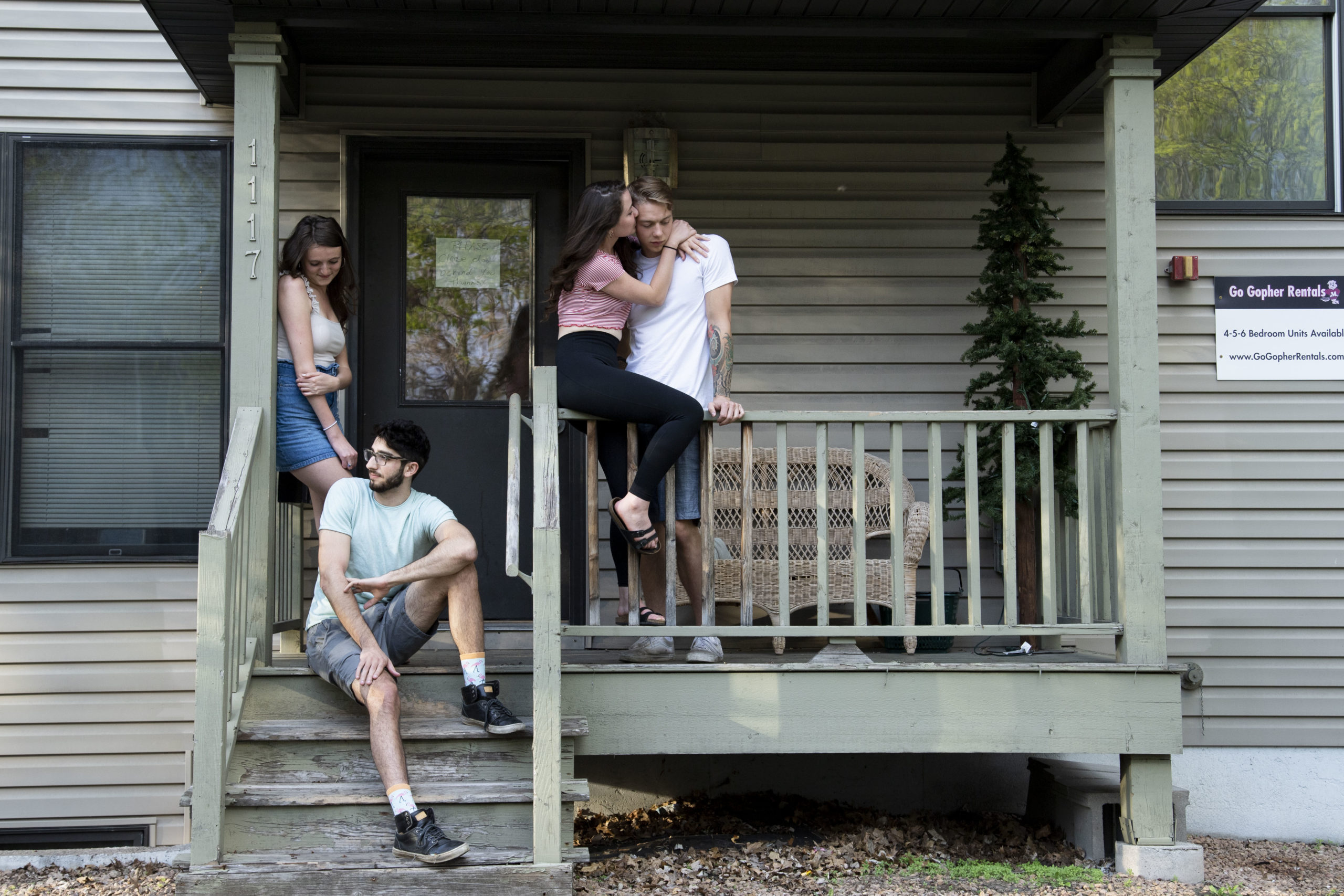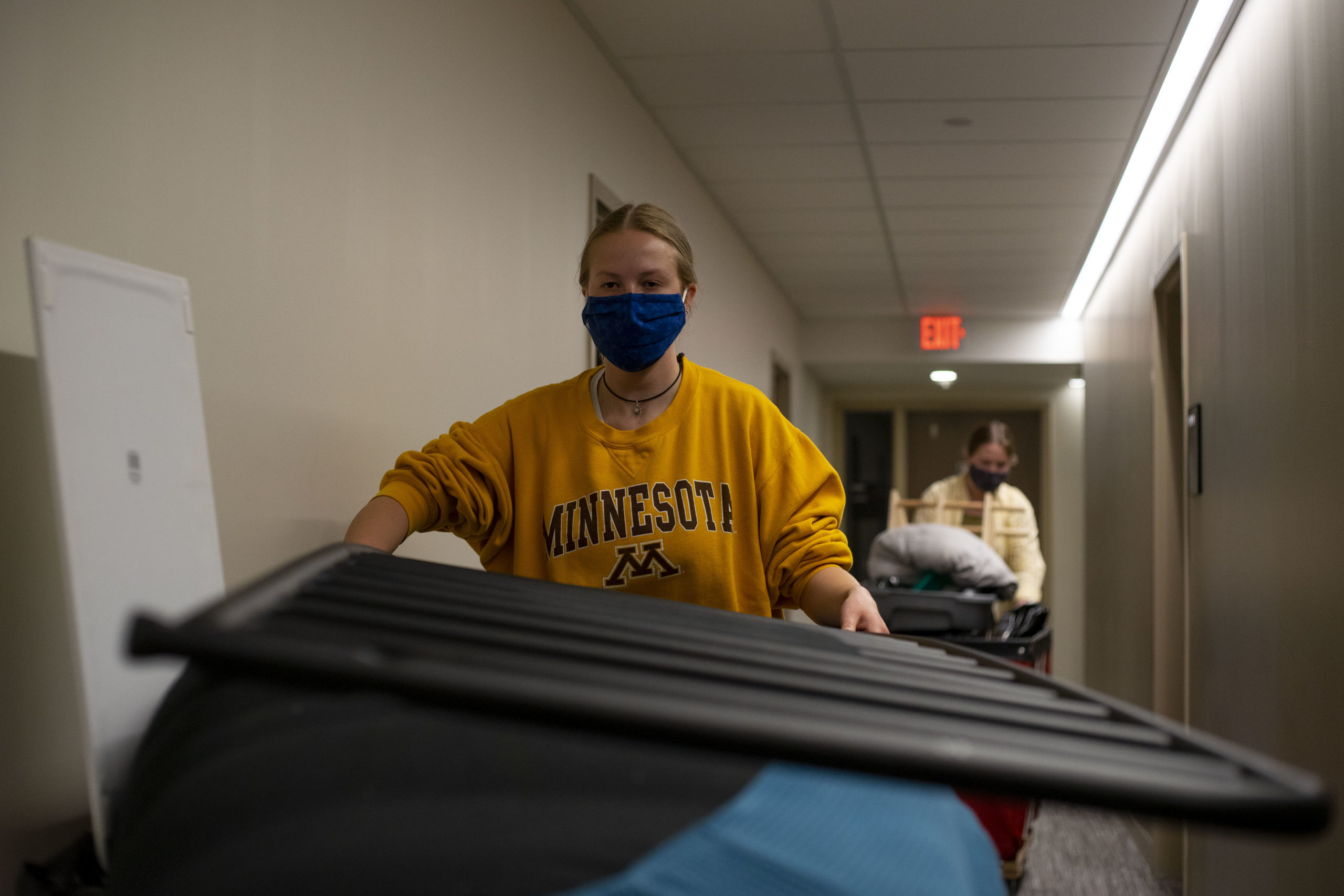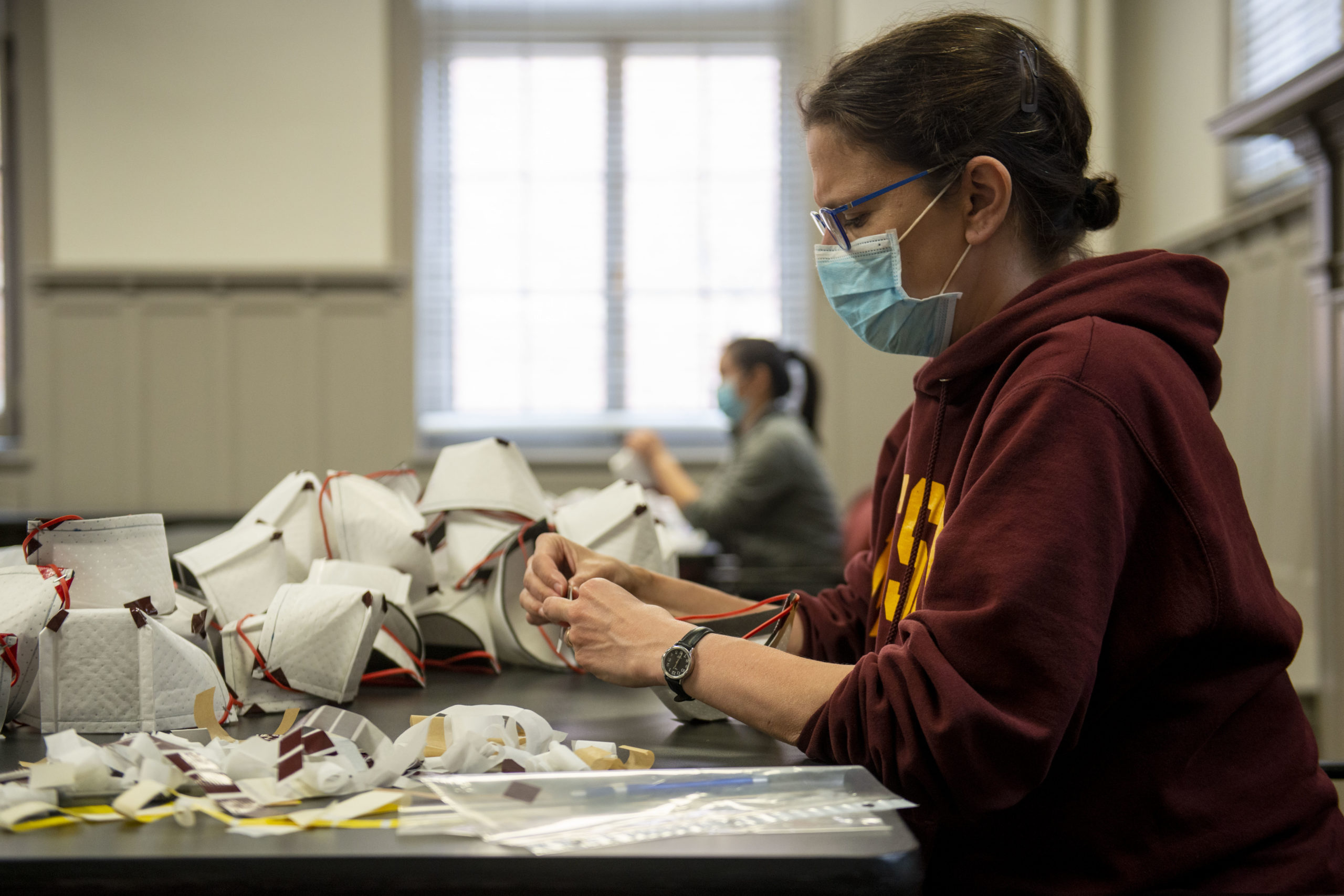The Lead is a weekly newsletter that provides resources and connections for student journalists in both college and high school. Sign up here to have it delivered to your inbox every Wednesday morning.
Every year, The Minnesota Daily’s multimedia staff fans out around campus on a chosen day with one goal: to document 24 hours of campus life, from midnight to midnight.
This year was different. The University of Minnesota moved classes online in mid-March, many students moved off campus and the Daily stopped publishing a print paper.
The staff continued the Day in the Life project, though, with safety precautions in place and a new focus on portraits and profiles. “As documentarians with a mission to help create the first draft of history, the COVID-19 pandemic of 2020 presented both a unique challenge and obligation to approach our duty like never before,” the staff wrote in the project’s introduction.
Multimedia editor Jack Rodgers, who recently graduated, discussed how the Daily’s multimedia staff adapted the project during the pandemic. This interview has been edited for length and clarity.
How has the pandemic affected the Daily’s operations?
All of our meetings and communication is online now, and we don’t get to meet in person anymore. We were able to transition quickly because so much work is already done remotely, especially on the photo side. We’re communicating on the fly and are all over the place. It probably wasn’t as much of a challenge for us as students as it was professional organizations, since that’s what we were used to already. Our tone changed a little and became more serious, but the energy and pace didn’t really change.
We had conversations about safety and I passed along the template of what The Minneapolis Star Tribune is doing. We’re shadowing them in a sense and felt like that would be a fair enough guide for us as well. We’re giving subjects more than enough space, maintaining a 6-feet barrier, not going in anyone’s houses, things like that.
Normally we print twice a week, on Sundays and Thursdays, but we’re not printing at all anymore and won’t be printing this summer. Financially, we’re in a pickle, like most student newspapers, because there’s lots of ad revenue that goes into print.

8:20 p.m. Senior Miriam Blomberg roller blades across Fourth Street SE in Dinkytown. (Andy Kosier/Minnesota Daily)
How long has the Day in the Life project existed? Tell me about the project’s structure.
The earliest I know of is 2013. The photo team has done it every year since then, trying to give 24-hour coverage of what life at the University of Minnesota is like. In past years we went from midnight to midnight using 12-hour shifts — I started at midnight and rode my bike around, trying to capture the nightlife and early morning activities.
This year, we didn’t make everyone go out at midnight because we didn’t know if it was worth people’s time. We focused on more portraits and taking a different approach. Over 24 hours, what makes our campus unique and what are the stories we can tell?
Last year there were eight people on the project and this year we had six. We had some people who ended up going home, and our staff is a little smaller now. Not everyone is working their full weekly normal quota, but they’re still contributing where they can.

7:15 p.m. From left, Liz Wippler, Ben Javidan, Holland Griffin and Josiah Goodman pose for a portrait outside their home. (Jasmin Kemp/Minnesota Daily)
How else was the project different this year?
I encouraged everyone to have a plan going into their 24 hours or 12 hours, because eventually you’re going to run out of things to do. There aren’t as many moments happening out and about, so having a different perspective on that was big. We wanted to make sure people were talking to people, hearing their opinions, getting quotes and learning how their lives are different.
We set up some portraits a couple days before and reached out to people. We focused on student athletes, students working in health care and essential jobs: students whose lives are probably the most turned upside down right now.

11:15 a.m. Freshman Nellie Benton returns to Pioneer Hall to move her remaining belongings out of her dorm room, which was vacated at the end of March. (Jack Rodgers/Minnesota Daily)
What challenges came up, and how did you adapt to them?
We had to have a keener eye for capturing moments and finding things that are going on. Asking questions of people throughout the day: Can I follow you in this way and find a trail? We had to have a keener eye for capturing moments and finding things that are going on.
There was a girl outside sitting and eating Cheez-Its on a bench, and I asked if I could take her photo. She said she was taking a break and was volunteering and making masks, and there was a whole group in the college of design volunteering to make masks.
Be patient, talk to people, ask questions and learn. We had to be a little extra curious and take the extra step to find stories and things that were happening.

12:33 p.m. Caren Oberg, a third year Ph.D student in the college of design, volunteers to help make face masks. “It feels good to be a part of a solution,” says Oberg, “and there are many solutions.” (Jack Rodgers/Minnesota Daily)
One tool we love
Do you use the same password for every website login (bad!) or use different ones, but constantly forget them (also bad!)? Lastpass might be the solution. The password manager securely stores all your existing passwords and helps you generate new ones, and you only have to remember one password to get into your account. The free account gives you access to your passwords on all your devices, and a premium plan adds 1GB of encrypted file storage.
What’s your favorite tool that other student journalists should know about? Email me and I might feature it in a future issue.
One story worth reading
How can you make sure your coronavirus reporting is reaching the audiences who need it? Ask your community to help, consider translating essential stories and make your coverage visual, Fiona Morgan writes for the American Press Institute. “People get overwhelmed with information easily, especially when they’re stressed,” she wrote. “Simple visuals help.”
Opportunities and trainings
- The Student Press Law Center’s Summer Media Law & Policy Institute is a three-week online course taught by media law experts around the country. Apply by May 20.
- Apply for the Student Press Law Center’s press freedom awards for high school and college journalists by May 22.
- The Society of Professional Journalists seeks interns to cover the Excellence in Journalism conference in Washington, D.C., this fall. Apply by May 24.
- The Native American Journalism Fellowship for college students includes a reporting immersion at the National Native Media Conference, mentorship and trainings. Apply by May 31.
- BigPicture is giving two $2,500 grants to photographers between the ages of 18 and 25. Apply here by May 31.
- Apply for Poynter’s summer high school journalism workshop, which will be held online this year, by June 19.
- Webinars:
- Poynter: Job hunting during a pandemic (video posted)
- IRE: How to best prepare for summer and beyond with or without an internship, Investigating higher ed amid COVID-19 (videos posted)
- SPJ: College media revenue reversal: How will you survive after the shutdown? (video posted)
💌 Last week’s newsletter: Here’s how student publications are covering graduations in the age of coronavirus
📣 I want to hear from you. What would you like to see in the newsletter? Have a cool project to share? Email blatchfordtaylor@gmail.com.
Taylor Blatchford is a journalist at The Seattle Times who independently writes The Lead, a newsletter for student journalists. She can be reached at blatchfordtaylor@gmail.com or on Twitter @blatchfordtr.






